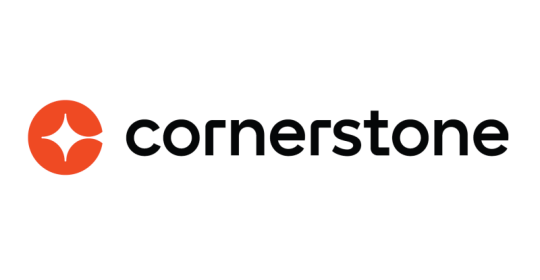Previously, data generated in the healthcare industry was stored in hard copy files. While this data had the huge potential of improving a broad range of healthcare functions, accessibility and other limiting factors made this impossible. Digitization has made it possible to collect this data through channels of digital technologies to develop viable solutions for healthcare challenges and inefficiencies.
Big data has unlocked opportunities not just for professionals in the healthcare industry but also unlocked a huge potential in public health, institutional health, research, and patient care services. Big data analytics courses, big data engineer courses, data science, and other courses in the big data field have thus seen an unprecedented demand as the demand for professional big data skills rises sharply. The R&R Market Research Report estimated a 23.7% growth rate to the tune of $10.8 billion of the healthcare analytics market between 2012 and 2017. Fully exploiting big data in the healthcare industry according to McKinsey is bound to reduce healthcare spending by $300 to $450 billion in the U.S. alone.
Sources of healthcare data
Healthcare big data is generated from several sources both internal and external sources. Given the staggering volumes of data being generated every second, there is a need for institutions and other industry players to invest in infrastructure with enough capacity to enable the systematic collection and analysis of big data to explore the full potential of big data.
Some common digital channels that generate healthcare big data are:
- Internal systems and applications like CRM systems, EHRs (Electronic Health Record), and electronic patient records (EPRs).
- IoT devices. These are portable devices installed with monitoring software such as sensors, other patient monitors, imaging devices, and energy meters.
- Social media platforms like Facebook posts, Twitter feeds, status updates, and others.
- Healthcare websites, blogs, smartphone application data, data from search engines, medical journals, and news feeds.
- CPOE and other human-generated data such as Electronic Medical Records, doctor’s notes, and prescriptions
- Transactional data such as health insurance claims and billing records.
- Biometric data such as scans, X-rays, and other forms of medical imaging as well as fingerprints and written documents.
- Biomedical studies, research, reports, and other findings related to drug discovery, interactions, side effects.
- Data from geospatial analyses
Uses of big data in healthcare
Big data in healthcare has the potential of unlocking highly effective solutions to global, public, and institutional health challenges. Healthcare analytics could reduce the cost of treatment, cost of administration, predict patient attendance in hospitals for staffing purposes, predict disease outbreaks, and put in place preventive measures among many other uses.
Here are six applications of big data in healthcare
Precision healthcare - Improving healthcare delivery and clinical outcomes
It is characteristic for technologies to go through upgrades to meet changing performance demands. Improved technology makes it possible to collect and analyze data, sometimes in real-time, ultimately delivering valuable insights for delivering better patient care. Some aspects of high-quality patient care include:
- Convenience through telemedicine, virtual care, and proper sound health management that empowers the patient
- Reduced error and efficient service delivery
- Patient involvement in decisions
- Provision of timely, accessible, and reliable healthcare services
- Accurate diagnosis and adequate treatment through comprehensive knowledge of patient information and effective patient monitoring
Patient prediction - Optimized workflow/increase profits
A report by the Society of Actuaries indicates that 57% of healthcare sectors believe that predictive analytics will save institutions at least 25% in costs annually. Predictive analytics is applied to eliminate challenges associated with overstaffing or understaffing in healthcare institutions. By forecasting admission rates, institutions are in a good position to allocate their workforce adequately to meet projected demand. Ultimately, this results in better resource management hence higher profits. Secondly, predictive analytics also reduces readmission rates which reduces the workload for healthcare staff allowing them to be more productive.
After running tests on a patient, it’s crucial to have a streamlined process for managing and analyzing the results. Well-rounded electronic lab reporting solutions are going to ensure that test data is efficiently integrated into patient records, enabling quicker and more accurate decision-making. This not only improves patient outcomes but also optimizes the workflow for healthcare providers by reducing administrative burdens. Such advancements play a key role in creating a more efficient and effective healthcare system.
Big data analytics and EHR - Develop effective personalized treatment models
Big data analytics has empowered doctors to have a holistic view of a patient’s health history. On the other hand, patients are more empowered with information and are taking charge of their personal health. With this trend, doctors can design accurate intervention programs to treat diseases well before progressing to advanced stages which are often too complicated and expensive to treat. Big data analytics is shifting the paradigms of healthcare delivery away from a reactive to a preventive approach.
Big data helps healthcare institutions to identify and address:
- patients with multiple conditions
- Patients who are at a high risk of illness
- Symptoms or signs of certain illnesses during their early stages
For insurance companies, a holistic view of a patient’s health history helps them create a tailored package that is specific to a patient’s needs.
Surveillance - State of public health
Big data has played a significant role in enhancing public health surveillance. These systems monitor health and disease trends, behaviors, incidents, occurrences and recurrences, and environmental triggers to give insight on managing population health in terms of resource allocation, prevention, and control of diseases, and research.
IoT in healthcare - The place of wearable technology in healthcare
IoT devices are powerful monitoring tools in healthcare. The number of connected things in healthcare keeps growing. A study by McKinsey projected that by 2020, 40% of IoT-related technology will be associated with the healthcare industry which reflects the significant impact that this technology has on healthcare.
IoT refers to a network of devices (things) installed with software and sensors and connected to the internet to facilitate the collection and transmission of data. IoT devices have several applications including tracking patients’ health parameters like blood pressure, heartbeat, stress levels, and weight as well as the more general life conditions like exercising and sleep quality. Devices such as headbands, pulse oximeters, electronic scales, glucose monitors, BP monitors e.t.c.
IoT technology coupled with big data analytics facilitates early diagnosis of illnesses, accurate treatment, provision of safety for high-risk patients, and on a broader scale, monitoring disease outbreaks. In general, IoT devices help doctors to be in touch with their patients more proactively.
Virtual/digital healthcare - Telemedicine, eHealth, and mHealth
Virtual healthcare employs such technology as telephones, mobile applications, videos, texts, and other forms of communications to deliver healthcare to patients without them reporting physically to a healthcare facility. The virtual care revolution was ushered in by the wave of digitization that has swept most if not all industries. Virtual healthcare includes telemedicine, eHealth, and the emerging mHealth fields. Telemedicine refers to the provision of primary diagnosis, consultation, and patient monitoring services remotely through calls and videos on telephones and smartphones.
eHealth, also known as electronic health, refers to the use of information technology in healthcare. It is a broad field that depicts a paradigm shift in the healthcare sector. An emerging field and a subset of eHealth is mHealth which is also known as mobile health. This refers to the use of smart technology by patients to achieve their health objectives. Objectives could be patient care outcomes, fitness goals, or healthcare research by institutions. mHealth has proved effective for chronic disease management and monitoring. This platform also enhances interactions between healthcare providers and patients while at the same time promoting wellness. Both the patient and physician have access to the health data of a patient over a period of time.
Conclusion
Health data is vital for the improvement of healthcare at the global, regional, local, institutional, and individual patients level. While this is true, it should be noted that the quality of care and impact from insights delivered by health data will greatly depend on its quality and accuracy. Both the primary and secondary uses of health data expand as much as its growth rate. Beyond digitization, the full potential of this data is yet to be realized in the industry.






